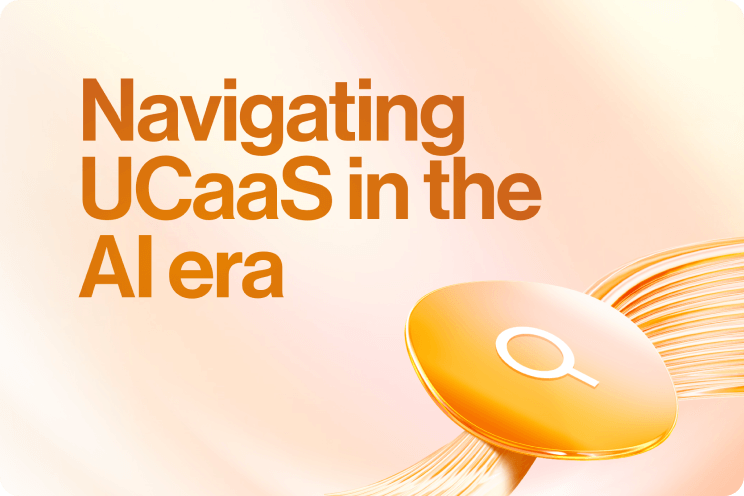Customer service can make or break a business. Put yourself in the shoes of a customer; you’ve encountered a problem with your product and need to contact support. If you get a resolution quickly, you’re more likely to go away smiling and stick with the business. A bad customer service experience can completely derail your relationship with a brand, even if you’ve had a good purchase experience and were initially happy with your product.
Understandably, unhelpful customer service leaves an unpleasant taste in customers’ mouths. As many as 73% will switch to a competitor after multiple bad experiences. How, though, can you identify when your customer service isn’t up to scratch? More importantly, how can you overcome the curse of bad customer service? Keep reading to find out.
What is bad customer service?
Let’s explore a bad customer service definition. Put simply, bad customer service fails to meet the needs of your customers. Even worse, it can make them feel more frustrated than when they first contacted support. As we’ll explore in this article, bad service can take many forms. Customers might deal with long queues, rude agents, or find it difficult to reach a human agent.
⭐️⭐️⭐️⭐️⭐️ Ready to offer 5-star customer service? Get strategies for every stage of the customer journey with this free eBook.
Bad customer service vs good customer service at a glance
| Issue | Bad customer service | Good customer service |
| Communication | Lack of clarity. Customers may fail to understand instructions | Instructions communicated clearly, without jargon |
| Knowledge | Lack of expertise relating to customer problems | Agents are well-informed and have the appropriate skills to deal with queries |
| Response times | Customers facing long waits in queues or for a call-back | Customers are served quickly and directed to the correct agent |
| Attitude | Negative or ill-tempered agents who struggle to deal with criticism | Agents maintain a positive attitude in all situations |
| Personalization | Little effort to understand a customer’s unique problems | Experiences tailored around the needs of individual customers |
| Resolution | A customer must contact support multiple times to resolve a problem | A customer’s issue is resolved on the first contact |
The business impacts of bad customer experience
Left unaddressed, bad customer experiences can cause lots of problems for businesses. Let’s explore some of the ways bad customer service can impact you.
Increased customer churn
Customers aren’t likely to stick around if you fail to deliver the kind of experiences they expect. There’s a high chance they’ll switch to one of your competitors with a seemingly better customer service track record.
This means higher marketing costs for your business. When you retain your audience, you don’t need to spend as much time acquiring new shoppers—you’ll get new customers organically through word of mouth.
High churn means you’ll need to invest in tactics that will fill the gap left by former customers. This can quickly become financially unsustainable in the long run.
Loss of top talent
Ultimately, your business is only as good as the people it employs. You’ll want to hang on to the top talent who deliver consistent results. Bad customer service experiences make this task harder.
The reputation of your organization rubs off on your employees. They’ll feel less enthusiastic about working for an employer that struggles to keep its customers happy. At best, this will translate to lower levels of productivity. At worst, employees will seek positions at organizations with happier customers.
Higher operational costs
When you deliver high-quality customer service, you’ll resolve queries more quickly. Customers go away happy and your service team can move on to the next query.
Negative customer service experiences have the opposite effect. If issues aren’t resolved on first contact, customers will need to get in touch again. Teams might struggle to handle higher call volumes, and you may need to expand your team. Alongside staff wages, this means more equipment, training, and maintenance. Left unaddressed, these costs can add up, and starve other important aspects of your business of funding.
Harder to acquire new customers
Sometimes there’s nothing more powerful than word of mouth. Reports of unpleasant customer experiences can spread like wildfire and harm your overall business reputation. Potential customers will see unfavorable reviews and angry customer comments, and think twice about buying from you.
Turning your reputation around can be a long process. You’ll need to persuade customers to post positive reviews to counter negativity. You might also need to spend money on costly PR campaigns.
15 Bad customer service examples and how to avoid them
Poor customer service brings lots of negative impacts. How can you make sure that your contact center isn’t falling into bad habits? Treat the poor customer service examples listed below as warning signs:
1. Making customers wait too long
Let’s face it, no one likes waiting in queues. Customers—especially those with simple queries—will become annoyed if they have to wait too long before speaking to an agent.
Lengthy customer waiting times can be a result of many different issues. One of the biggest culprits is understaffing. Businesses fail to anticipate busy times and don’t have enough people handling communication channels.
Another cause is the failure to prioritize calls effectively. Customers with simple queries are placed in the same queue as those with complex issues. Instead of receiving a quick resolution to their problem, they are often left waiting.
How to avoid it
The easiest way to reduce customer waiting times is to ensure your agents have the right tools. Workforce management software features can project your future staffing needs. It’ll help you identify busy periods, so you can ensure you have the right staffing capacity to meet demand.
RingCentral, for instance, offers a suite of features that help with workforce management, including workforce planning and analytics, leave management, talent management, human capital management (HCM), and accurate scheduling.
To prioritize calls more effectively create two queues: One for simple queries and one for customers with more complex needs. This way, customers with basic issues can reach agents more quickly.
2. Transferring customers from agent to agent
Being passed from agent to agent is just as annoying as waiting in long queues. Customers get sick of being on hold and may give up after a while. In the worst-case scenario, their issue will remain unresolved and they’re forced to call again.
It’s an understatement to say that these experiences leave customers with a bad impression. There’s a high chance they might vent on social media or post angry reviews online. Too many instances such as these leave a damaging mark on your business.
Call transfers occur when agents lack the skills to handle customer queries. Without the right systems in place, customers might be passed from pillar to post to find the right agent.
How to avoid it
Use interactive voice response (IVR) tools to make sure customers reach the right agent. With IVR, customers use an automated system to answer a series of questions. The information they provide ensures they are routed to the correct agent for their issue.
With RingCentral, callers choose how much they take advantage of IVR. By following prompts they could receive automated responses to their queries, without the need for agent involvement. They also have the option of requesting human agents to deal with complex issues.
3. Providing inconsistent service across different channels
The future of customer service is omnichannel. This means that your brand is present on the same platforms as its audience. What’s more, customers can move from one platform to another without any disruption. They can start a query on one channel and continue it on the next.
Unfortunately, too many organizations currently offer multichannel experiences. They’re present on multiple platforms but fail to deliver seamless experiences between them. When customers change channels they encounter a noticeable difference in quality.
Lack of consistency can damage customers’ overall opinion of your brand. They’re also more likely to choose channels they perceive to be high-quality. This could lead to certain support teams becoming overwhelmed.
How to avoid it
To overcome inconsistency, start putting a strong focus on delivering omnichannel experiences. The simplest way to achieve this is by choosing a reliable platform that can create purposeful connections across various voice, video, and digital channels.
RingCentral RingCX, for example, is a holistic omnichannel solution, ensuring exceptional customer experiences across all your channels.
4. Failing to show empathy for customers’ problems
Customers don’t just contact customer service to find a resolution to a problem. Often, they also want to express frustration and for your business to recognize any mistakes it made.
Your support team must show understanding toward a customer’s problem. If an agent is sending the message “I’m helping you because I have to”, customers will feel undervalued. Even if their issue is resolved, they may feel frustrated due to a lack of accountability on your part.
How to avoid it
If a customer wants to vent, let them. Agents should let customers voice their frustrations without interruption. They should use this time to find the best way to help them.
Always show accountability. Agents should put themselves in a customer’s shoes and acknowledge their struggles.
5. Not acting on customer feedback
Every piece of customer feedback you receive, either positive or negative, is valuable. Good reviews show that you’re headed in the right direction. Unfavorable reviews help your organization to understand the areas where it’s falling short. By acting to address these areas, it can improve the quality of its service and produce happier customers.
Unfortunately, too many businesses fail to see the positive side of negative feedback. They avoid criticism and carry on as they are. Problems persist, and can even get worse. Ignoring negative feedback also leaves customers feeling undervalued. They might take their custom to one of your competitors.
How to avoid it
Don’t shy away from feedback. Instead, actively seek it. Send surveys to customers who have interacted with customer service. Have them rate their experience and leave suggestions about improvements.
Keep an eye on online reviews. Always respond, either by thanking the reviewer or by acknowledging criticism.
Be proactive about responding to suggestions. Don’t just make improvements but demonstrate to your audience that you’re acting on feedback. You might issue updates via your website, on social media, or via email.
6. Not listening to customers
There are few things more irritating to customers than the sense that agents aren’t paying attention. Customer service is about listening to customers and understanding their needs.
When callers are frequently asked to repeat themselves it suggests a lack of care. They’ll feel less confident in the agent’s abilities to solve their problems and are more likely to become frustrated.
Lack of attention from agents also leads to mistakes. There’s a higher chance they’ll enter incorrect information, preventing them from providing the help a customer needs.
How to avoid it
Make sure that agents practice active listening. This technique isn’t just about listening to customers. It’s about trying to gauge their emotions and understand what they aren’t saying.
To succeed, make sure that agents always give customers the space to speak. They should try to match their tone and pace when responding, and recap talking points to prove they’re listening.
7. Difficulty reaching a human agent
Exciting AI innovations are transforming the ways call centers operate. As many as 58% of business leaders say that AI chatbots will be the most significant innovation in the next five years. But this shouldn’t mean losing the human element entirely.
Successful customer service is about connecting with customers on a personal level. That’s only possible with experienced human agents. Issues start to arise when customers find it difficult to reach human agents. They become frustrated and lose a sense of connection to your business.
How to avoid it
Treat AI as a way of enhancing rather than replacing human agents. When customers get in touch, make sure there’s a clear way to reach an agent.
When you use AI make sure to utilize intelligent solutions that can address customer needs. RingCentral, for instance, is committed to nonstop innovation and delivering the latest AI technologies to support agents and customers.
8. Inefficiency within your teams
Customers don’t like to be left waiting, but reducing queue length isn’t always enough. Once a customer reaches an agent, they want their issue to be resolved in a timely way. They don’t want to wait for agents to gather necessary information or input their details.
Unfortunately, many customer service teams are hampered by inefficient internal processes. This contributes to delivering bad customer care. As the expression goes “time is money”; inefficiency also increases costs. When agents work slowly, you need a larger team to keep up with customer service demands.
How to avoid it
There are plenty of ways to iron out inefficiencies in your team. Firstly, automated tools should be used to handle time-consuming manual processes, such as data entry, note-taking, and lead management.
Alongside automation, consider the different ways you can carry out call center quality assurance. Sit down one-on-one with agents and identify individual weaknesses. Work together to create and develop a learning plan for dealing with inefficiencies.
9. Failure to offer personalized experiences
There’s no denying that personalization plays a critical role in building better customer experiences. As many as 81% of customers prefer companies that offer a personalized experience.
While lots of organizations focus on purchase experiences, providing personalized offers and product recommendations, they don’t apply the same focus to customer service. This can lead to customers feeling that their unique needs are being overlooked.
How to avoid it
Luckily, there are lots of methods for personalizing customer service. Agents using customers’ names is a simple form of personalization. It builds a rapport with customers, and prevents them from feeling like “just another statistic”.
Data is also a crucial part of personalization. Agents can leverage customer information, such as purchase history and records of previous interactions with customer support, to stay one step ahead. They’re then able to provide more tailored assistance and find solutions more easily.
10. Use of “dark patterns”
Dark patterns are utilized by businesses to deceive customers into carrying out certain actions. Influencing customers to behave in certain ways is part of running a business. Tricking your audience, however, is certain to cause feelings of resentment
Dark patterns shouldn’t play a role in your customer service. For example, customers shouldn’t be tricked into signing up for your mailing list to use a chatbot. Of course, sometimes businesses use dark patterns without realizing it. A cookie banner that is harder to opt in than out, for instance, is an example of a dark pattern.
How to avoid it
Always avoid the use of dark patterns. Maintain a customer-centric approach and build the best possible experiences. With a strong audience understanding you can get the results you want without resorting to underhand tactics.
To avoid accidentally using dark patterns, review your online customer service regularly. Carry out user testing before implementing new features to identify issues that could mislead your audience.
11. Customers struggle to reach support
When your audience encounters a problem, they should know where to go. When customers know that help is at hand, they feel reassured. They’re more likely to invest in your products or services.
Problems arise when customers don’t know how to reach support. This only increases their frustrations, which they may go on to air online. Ultimately, this leads to bad press and a damaged reputation.
How to avoid it
Clearly signpost the different ways customers can reach support. Include easy-to-find links on your website and social media platforms.
To make support as easy to reach as possible, be present on as many platforms as possible. Offer self-service options so that customers can solve simple issues without needing to contact support.
12. Agents lack product knowledge
Your agents are your business representatives. They should know your products like the back of their hand. This way, when customers get in touch with issues, they have the know-how to help them.
Without the appropriate knowledge, agents will struggle to provide the assistance that customers need. There’s a high chance they’ll need to transfer a customer to another agent or leave them on hold while they gather the necessary information.
This results in your business looking less professional. Buyers may lack the confidence to invest in your products again in the future.
How to avoid it
Always train your agents so they have strong product knowledge from day one. This should involve them getting hands-on with your offering and its different features. Make sure they’re well-versed in information relating to warranty and troubleshooting.
Create FAQs that agents can access during customer interactions. These serve as useful references if a team member ever gets stuck on a call. RingCX, too, can provide live pop-ups on calls to help guide agents and give them extra information:
*image 4
13. Not following up with customers
A follow-up can be a good way of reducing queues. Instead of waiting to be connected to an agent, the agent will contact the customer when they become free. When you promise to follow up with a client, though, you must honor it.
When clients wait around for a call that never comes, they become extremely frustrated. Once again, they might air their frustrations online for all to see. Reports of your business not being bothered to contact customers aren’t a great look. If the problem occurs too regularly, it can leave lasting damage to your reputation.
How to avoid it
Be sure to follow up with customers when you promise. Having the right system to track follow-ups can help ensure that agents don’t forget. Make sure your communications platform integrates easily with your CRM. RingCentral, for instance, supports native integration with many popular platforms.
Alongside this, make sure to set realistic expectations when promising follow-ups. Don’t commit to calling within a certain timeframe if you’re unlikely to be able to live up to it.
14. Support teams being hindered by outdated systems
The customer service landscape is constantly changing. New technologies, such as virtual call centers, are transforming the way organizations interact with customers. As these innovations arrive, customer expectations also change. They’re accustomed to quicker, more personalized experiences.
When agents are stuck with older technology, it’s much harder to meet these expectations. Systems take longer to load information so customers are left waiting for longer. Older systems also lack personalization features, making it harder to tailor experiences around customer needs.
How to avoid it
Avoid settling for older setups just to cut costs. Money saved won’t make up for lost revenue as a result of disappointing customers.
Opt for an up-to-date solution such as those offered by RingCentral that provide the AI-powered insights agents need to support customers and create seamless customer journeys.
15. Blaming customers for issues
When your business makes a mistake, it’s important to acknowledge it. The worst thing you can do is attempt to lay the blame on your customers. For example, an agent might accuse a customer of failing to follow instructions.
At best, this appears evasive, at worst it can offend your customers. They’ll feel undervalued and may look for alternatives to your business.
How to avoid it
Make sure agents know to take the blame when necessary. Enforce a culture of accountability throughout your organization. This shouldn’t just apply to dealing with customers. Leadership should acknowledge when they slip up. With a strong enough culture, accountability will come naturally to agents.
Bad customer service reviews examples
When a business’ customer service fails to deliver, it’s not uncommon for customers to leave unfavorable reviews. Here are some real-world examples of bad customer service:
Comcast
Comcast, a mass media corporation, is notorious for having awful customer service. This was brought to public attention in 2014 after a customer named Ryan Block recorded himself trying to cancel his subscription. Block’s experience was clearly not isolated. SiteJabber gives the company one star, with many reviews mentioning poor customer service.
AT&T
AT&T, a telecommunications company, is another company with a reputation for delivering some of the worst customer service. A strong example that failure to deliver can have lasting consequences.
A quick Google search produces many examples of unhappy former customers. Trustpilot gives the company an average of one star from 8,000 reviews. Reviews mention delays in receiving refunds and other untrustworthy practices.
AOL
AOL, a web services provider, is yet another example of a business with a terrible customer service track record. The company receives one star on Trustpilot. Reviews complain about unresponsive and unhelpful customer support. Some reviews also comment on being charged to receive assistance.
Examples of good customer service reviews
We’ve explored some bad customer review examples, but what about when companies exceed customer expectations? Here are some examples of good reviews for customer service:
Lumilum
Lumilum is a lighting wholesaler that’s received consistent reviews from happy customers, scoring nearly five stars on Trustpilot. Reviewers praise the company’s “informative” and “knowledgeable” customer service.
AARDY
AARDY is a travel insurance agency. Trustpilot gives the company 4.9 out of 5 stars. Here again, favorable reviewers left positive reports of interactions with “helpful” and “pleasant” customer service agents.
Trailfinders
Trailfinders is a hotel chain based over in the UK. The company has an average of five stars on Trustpilot with over 54,000 reviews. Feedback highlighted the professionalism and expertise of the agents. Reviewers reflected particularly on how agents made the booking process easier.
RingCentral RingCX can help you avoid the pitfalls of bad customer service
Hopefully, by now you realize how damaging bad customer service can be for businesses. Of course, building the best experiences for your customers can be tricky. That’s why it’s essential to equip your team with the tools to succeed.
RingCentral RingCX is an omnichannel contact center solution with everything agents need to deliver seamless experiences across all channels. You can create immersive agent experiences that simplify how agents handle customer interactions. The platform is also complete with virtual agents, delivering hyper-personalized solutions with generative AI.
Ready to embrace the power of omnichannel experiences? Contact sales to begin your RingCentral journey today.
FAQs about bad customer service
What makes bad customer service so damaging to businesses?
Ultimately, bad customer service denotes a lack of care from your business. It leaves customers feeling unvalued, and they take their custom elsewhere. Unhappy customers are also more likely to voice their opinions online.
What are some common signs of bad customer service in a business?
Bad customer service can take many forms. Here are some of the most common examples:
- Poor queue management leads to long waits before customers can speak to agents.
- Agents behaving unprofessionally or failing to show empathy for customers.
- A failure to personalize experiences around customer needs.
- Organizations ignoring negative feedback and reviews.
How do customers often respond to poor customer service?
When customers are unhappy, they’ll air their frustrations in the form of negative online reviews. These can damage your reputation and make it harder to acquire new customers.
Originally published Mar 28, 2025, updated Apr 02, 2025













